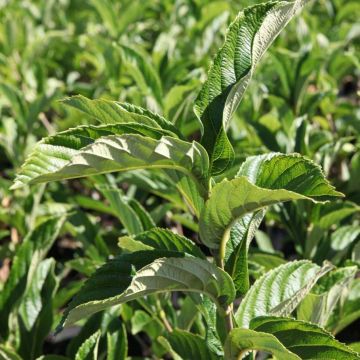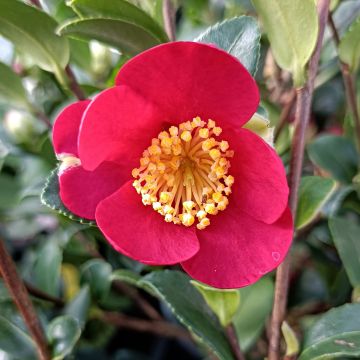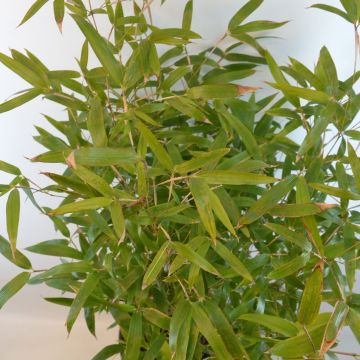

Viburnum burkwoodii Anne Russell
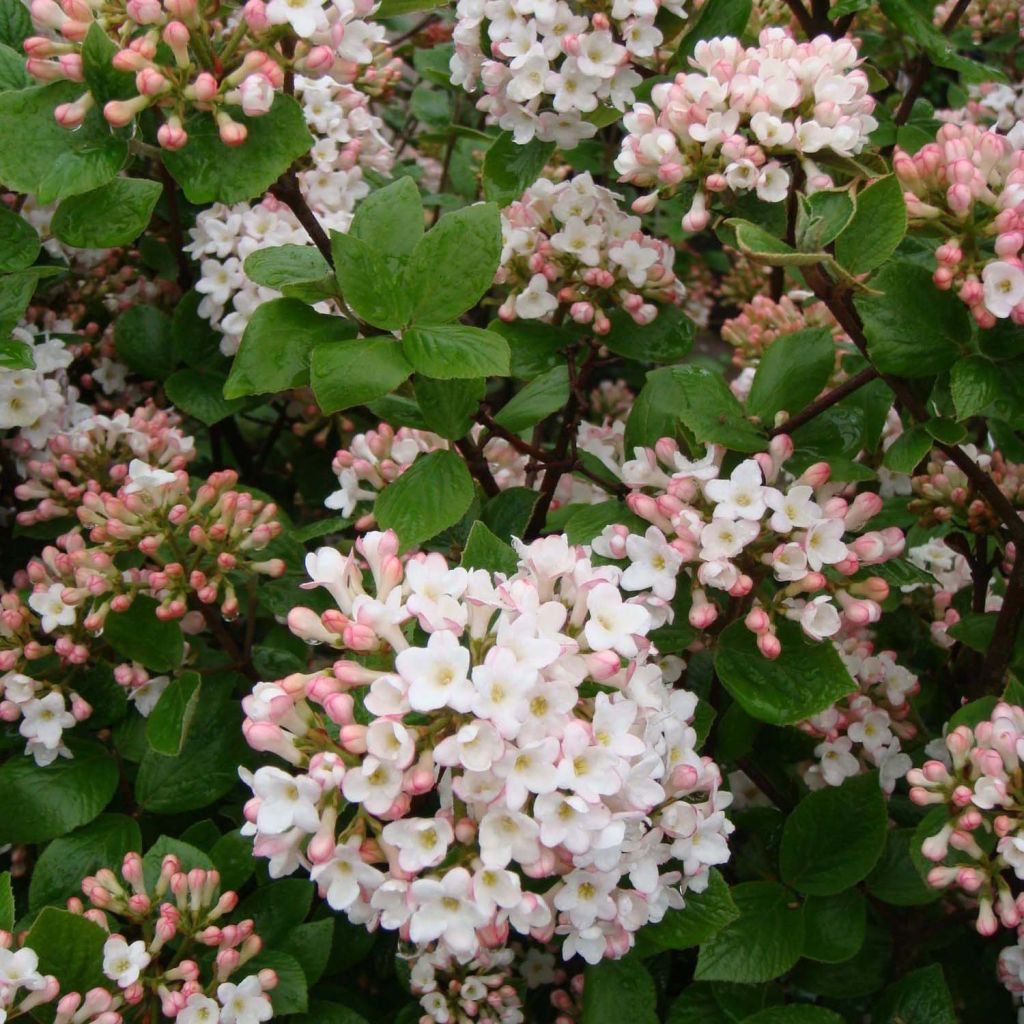

Viburnum burkwoodii Anne Russell
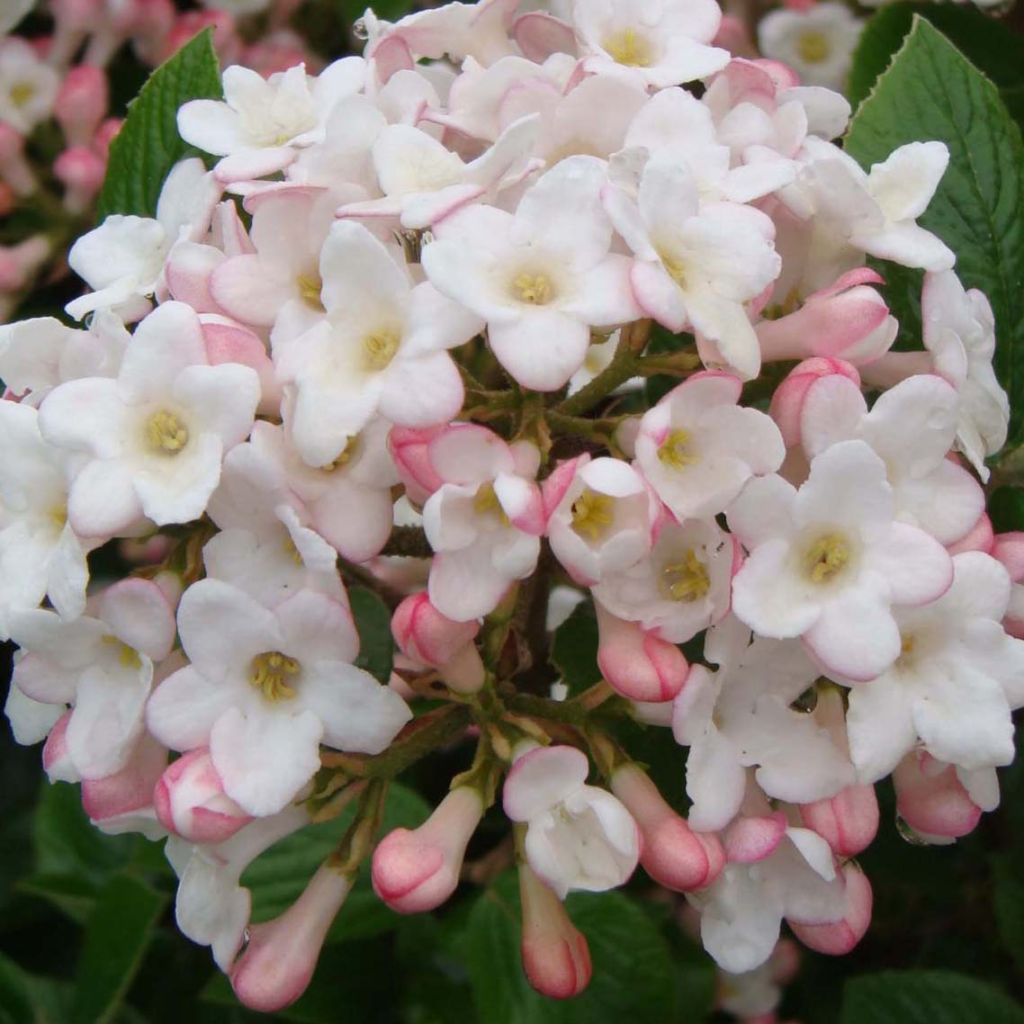

Viburnum burkwoodii Anne Russell
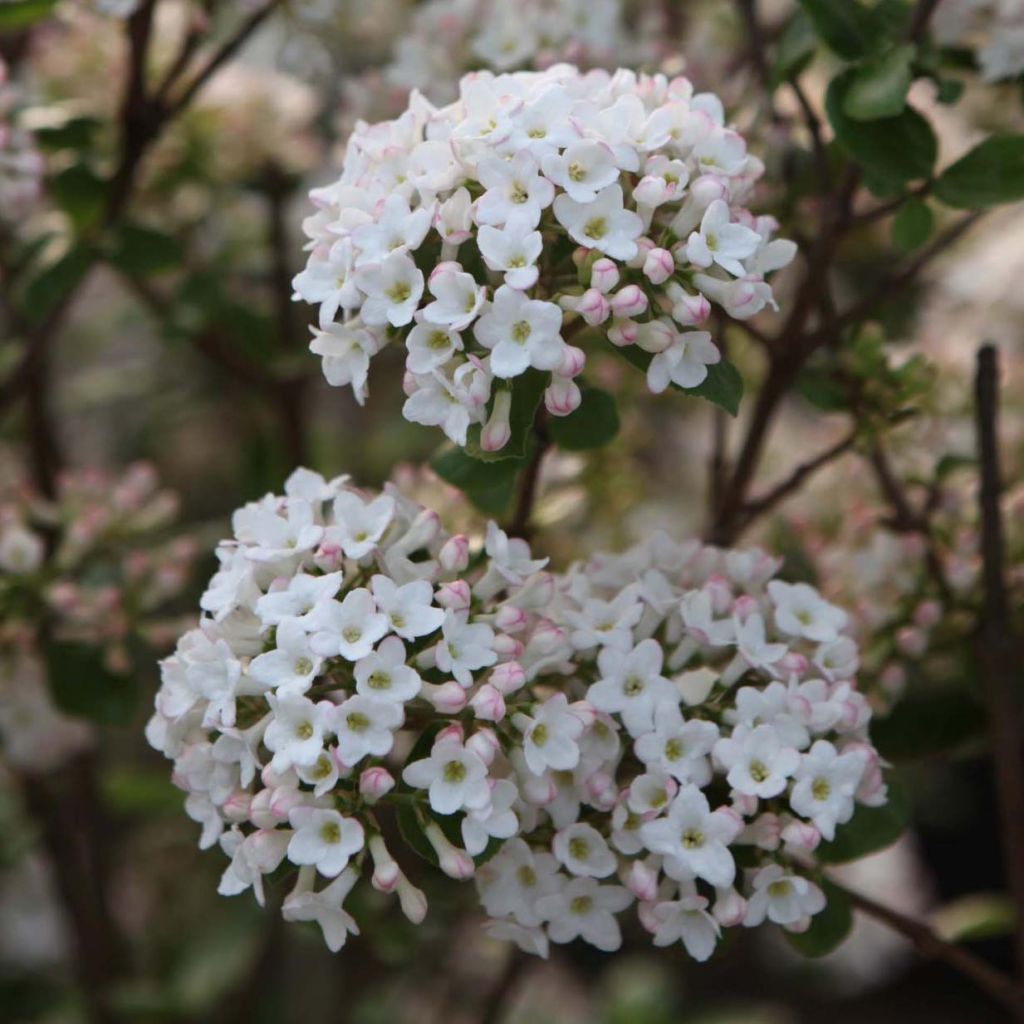

Viburnum burkwoodii Anne Russell


Viburnum burkwoodii Anne Russell
Viburnum burkwoodii Anne Russell
Viburnum x burkwoodii Ann Russell
Burkwood Viburnum
Viburnum ordered in February, arrived very quickly (2 days after ordering). Beautiful young plant with 7 buds that are now in flower (10th April). Exquisite fragrance!
Acasa, 10/04/2021
This item cannot be shipped to the selected country
Delivery charge from €5.90
More information
Schedule delivery date,
and select date in basket
This plant carries a 24 months recovery warranty
More information
We guarantee the quality of our plants for a full growing cycle, and will replace at our expense any plant that fails to recover under normal climatic and planting conditions.
From €5.90 for pickup delivery and €6.90 for home delivery
Express home delivery from €8.90.

Does this plant fit my garden?
Set up your Plantfit profile →
Description
Viburnum x burkwoodii 'Anne Russell', like all viburnums, is an easy-to-grow and extremely rewarding bush. This variety forms a medium-sized shrub with a rounded and bushy habit, which is more compact than the type. In spring, it produces beautiful spherical inflorescences adorned with pink buds that open into small white flowers, which are remarkably fragrant and reminiscent of orange blossom. It bears elegant foliage, which is semi-evergreen to evergreen depending on the mildness of the climate. It emerges bronze, becoming glossy green in summer, and truly flames in autumn. Viburnums integrate well into informal hedges; by choosing them carefully and mixing different species or combining them with other flowering shrubs, you will create a captivating garden that evolves throughout the year.
Burkwood Viburnum is an old horticultural hybrid resulting from a cross between Viburnum carlesii and V. utile. The cultivar 'Anne Russell', obtained by crossing Burkwood Viburnum with Viburnum. carlesii, differs mainly in its more compact habit and slightly less vigorous growth. Growing rather slowly, 'Anne Russell' eventually forms a large bush of 1.75 m (5.8 ft) in all directions. Its habit is broad and rounded, supported by initially upright branches that gradually lower, with the bush's habit becoming looser and more open over time. During the flowering period in April-May, the bush develops an abundance of 10 cm (3.9 in) diameter flower clusters at the ends of the branches. The pink buds open into white flowers that fade as they bloom, creating a subtle gradient of colours from white to pink, which are perfectly highlighted by the dark green foliage. The flowers are followed in September-October by spherical fruits that start red and turn black when ripe, extending the ornamental interest into part of the winter. The foliage takes on beautiful yellow, orange, copper, to purple hues in autumn.
Hardy down to -20° C (-4° F), Viburnum x burkwoodii 'Anne Russell' can be used as a standalone specimen in small gardens, as a hedge, or for mass planting in larger gardens. Its inflorescences can be used in floral arrangements. Consider planting it in a high-traffic area to fully enjoy its fragrance, near a window, along a pathway, or close to a door, for example. It works well alongside the deciduous and highly fragrant winter-flowering Viburnum x bodnantense, the autumn-coloured Viburnum lantago, lilacs, Japanese quince, Chinese almond trees, Viburnum davidii, Rosa complicata, and Cotoneaster lacteus. Note that it is a plant adaptable to many regions, as long as the planting is well cared for and it is helped to establish itself in the garden during the first two or three years.
Report an error about the product description
Viburnum burkwoodii Anne Russell in pictures




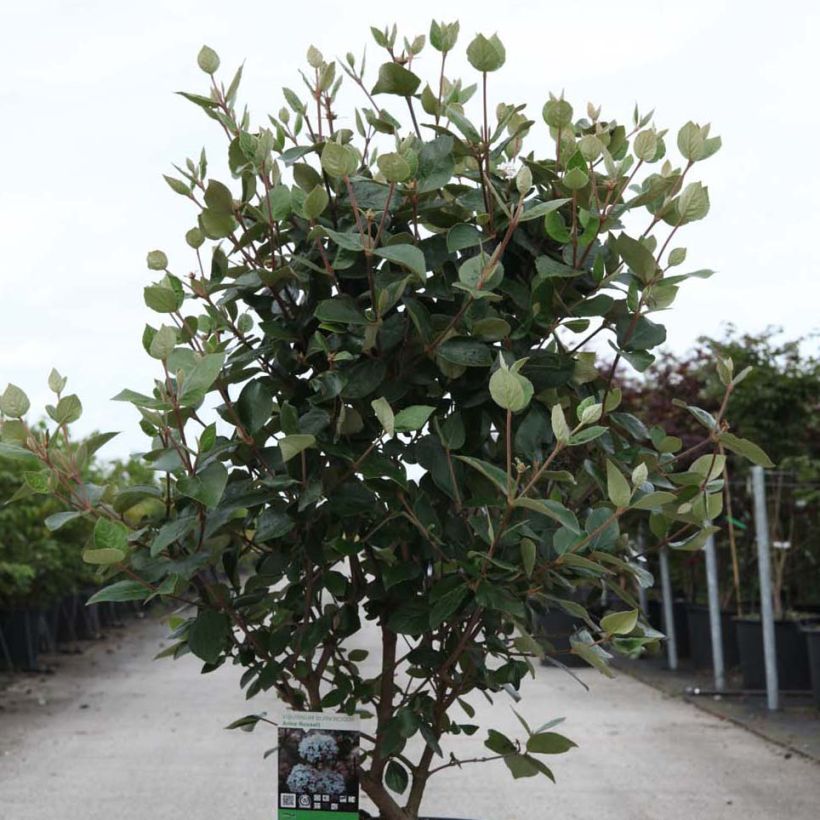

Plant habit
Flowering
Foliage
Botanical data
Viburnum
x burkwoodii
Ann Russell
Caprifoliaceae (Adoxaceae)
Burkwood Viburnum
Cultivar or hybrid
Other Viburnum
Planting and care
Hardy up to -20° C (-4° F), Viburnum x burkwoodii 'Anne Russell' thrives in sunny or partially shaded positions in a warm climate. Plant it in rather moist but well-drained soil, but above all, deep and fertile. Dig a fairly deep hole and loosen the bottom of the hole. Depending on the nature of your soil, it may be useful to enrich it with compost to lighten it or correct any excessive limestone content (in this case, adding ericaceous soil can be beneficial). To help it establish, ensure regular watering (except during freezing periods), especially during the first three summers following planting. Apply a slow-release fertiliser for flowering shrubs every spring or top dress with a good layer of well-decomposed compost.
Planting period
Intended location
Care
-
, onOrder confirmed
Reply from on Promesse de fleurs
Hedge shrubs
Haven't found what you were looking for?
Hardiness is the lowest winter temperature a plant can endure without suffering serious damage or even dying. However, hardiness is affected by location (a sheltered area, such as a patio), protection (winter cover) and soil type (hardiness is improved by well-drained soil).

Photo Sharing Terms & Conditions
In order to encourage gardeners to interact and share their experiences, Promesse de fleurs offers various media enabling content to be uploaded onto its Site - in particular via the ‘Photo sharing’ module.
The User agrees to refrain from:
- Posting any content that is illegal, prejudicial, insulting, racist, inciteful to hatred, revisionist, contrary to public decency, that infringes on privacy or on the privacy rights of third parties, in particular the publicity rights of persons and goods, intellectual property rights, or the right to privacy.
- Submitting content on behalf of a third party;
- Impersonate the identity of a third party and/or publish any personal information about a third party;
In general, the User undertakes to refrain from any unethical behaviour.
All Content (in particular text, comments, files, images, photos, videos, creative works, etc.), which may be subject to property or intellectual property rights, image or other private rights, shall remain the property of the User, subject to the limited rights granted by the terms of the licence granted by Promesse de fleurs as stated below. Users are at liberty to publish or not to publish such Content on the Site, notably via the ‘Photo Sharing’ facility, and accept that this Content shall be made public and freely accessible, notably on the Internet.
Users further acknowledge, undertake to have ,and guarantee that they hold all necessary rights and permissions to publish such material on the Site, in particular with regard to the legislation in force pertaining to any privacy, property, intellectual property, image, or contractual rights, or rights of any other nature. By publishing such Content on the Site, Users acknowledge accepting full liability as publishers of the Content within the meaning of the law, and grant Promesse de fleurs, free of charge, an inclusive, worldwide licence for the said Content for the entire duration of its publication, including all reproduction, representation, up/downloading, displaying, performing, transmission, and storage rights.
Users also grant permission for their name to be linked to the Content and accept that this link may not always be made available.
By engaging in posting material, Users consent to their Content becoming automatically accessible on the Internet, in particular on other sites and/or blogs and/or web pages of the Promesse de fleurs site, including in particular social pages and the Promesse de fleurs catalogue.
Users may secure the removal of entrusted content free of charge by issuing a simple request via our contact form.
The flowering period indicated on our website applies to countries and regions located in USDA zone 8 (France, the United Kingdom, Ireland, the Netherlands, etc.)
It will vary according to where you live:
- In zones 9 to 10 (Italy, Spain, Greece, etc.), flowering will occur about 2 to 4 weeks earlier.
- In zones 6 to 7 (Germany, Poland, Slovenia, and lower mountainous regions), flowering will be delayed by 2 to 3 weeks.
- In zone 5 (Central Europe, Scandinavia), blooming will be delayed by 3 to 5 weeks.
In temperate climates, pruning of spring-flowering shrubs (forsythia, spireas, etc.) should be done just after flowering.
Pruning of summer-flowering shrubs (Indian Lilac, Perovskia, etc.) can be done in winter or spring.
In cold regions as well as with frost-sensitive plants, avoid pruning too early when severe frosts may still occur.
The planting period indicated on our website applies to countries and regions located in USDA zone 8 (France, United Kingdom, Ireland, Netherlands).
It will vary according to where you live:
- In Mediterranean zones (Marseille, Madrid, Milan, etc.), autumn and winter are the best planting periods.
- In continental zones (Strasbourg, Munich, Vienna, etc.), delay planting by 2 to 3 weeks in spring and bring it forward by 2 to 4 weeks in autumn.
- In mountainous regions (the Alps, Pyrenees, Carpathians, etc.), it is best to plant in late spring (May-June) or late summer (August-September).
The harvesting period indicated on our website applies to countries and regions in USDA zone 8 (France, England, Ireland, the Netherlands).
In colder areas (Scandinavia, Poland, Austria...) fruit and vegetable harvests are likely to be delayed by 3-4 weeks.
In warmer areas (Italy, Spain, Greece, etc.), harvesting will probably take place earlier, depending on weather conditions.
The sowing periods indicated on our website apply to countries and regions within USDA Zone 8 (France, UK, Ireland, Netherlands).
In colder areas (Scandinavia, Poland, Austria...), delay any outdoor sowing by 3-4 weeks, or sow under glass.
In warmer climes (Italy, Spain, Greece, etc.), bring outdoor sowing forward by a few weeks.



































